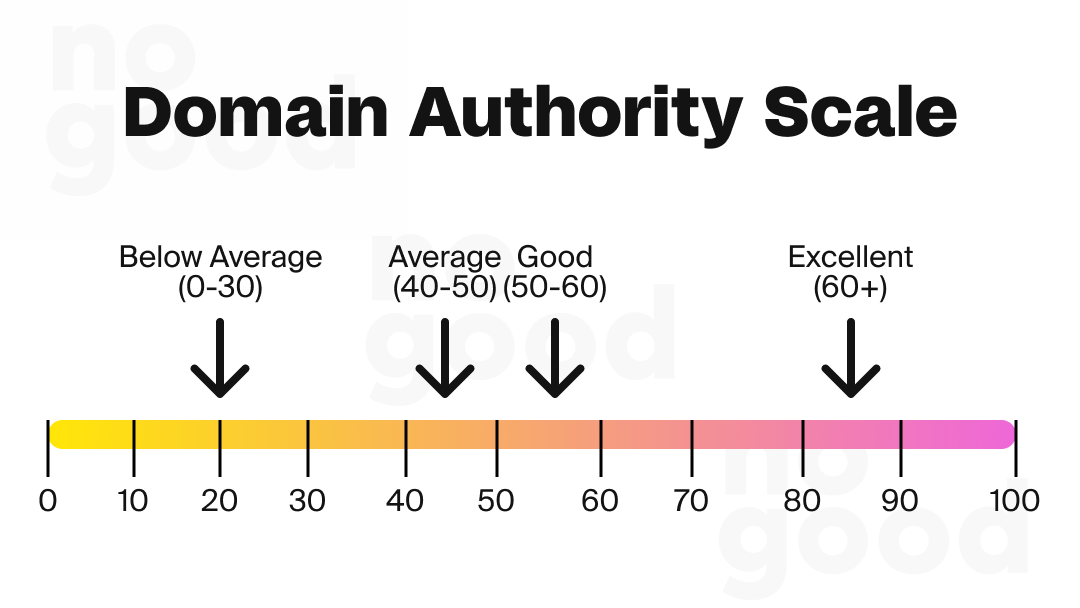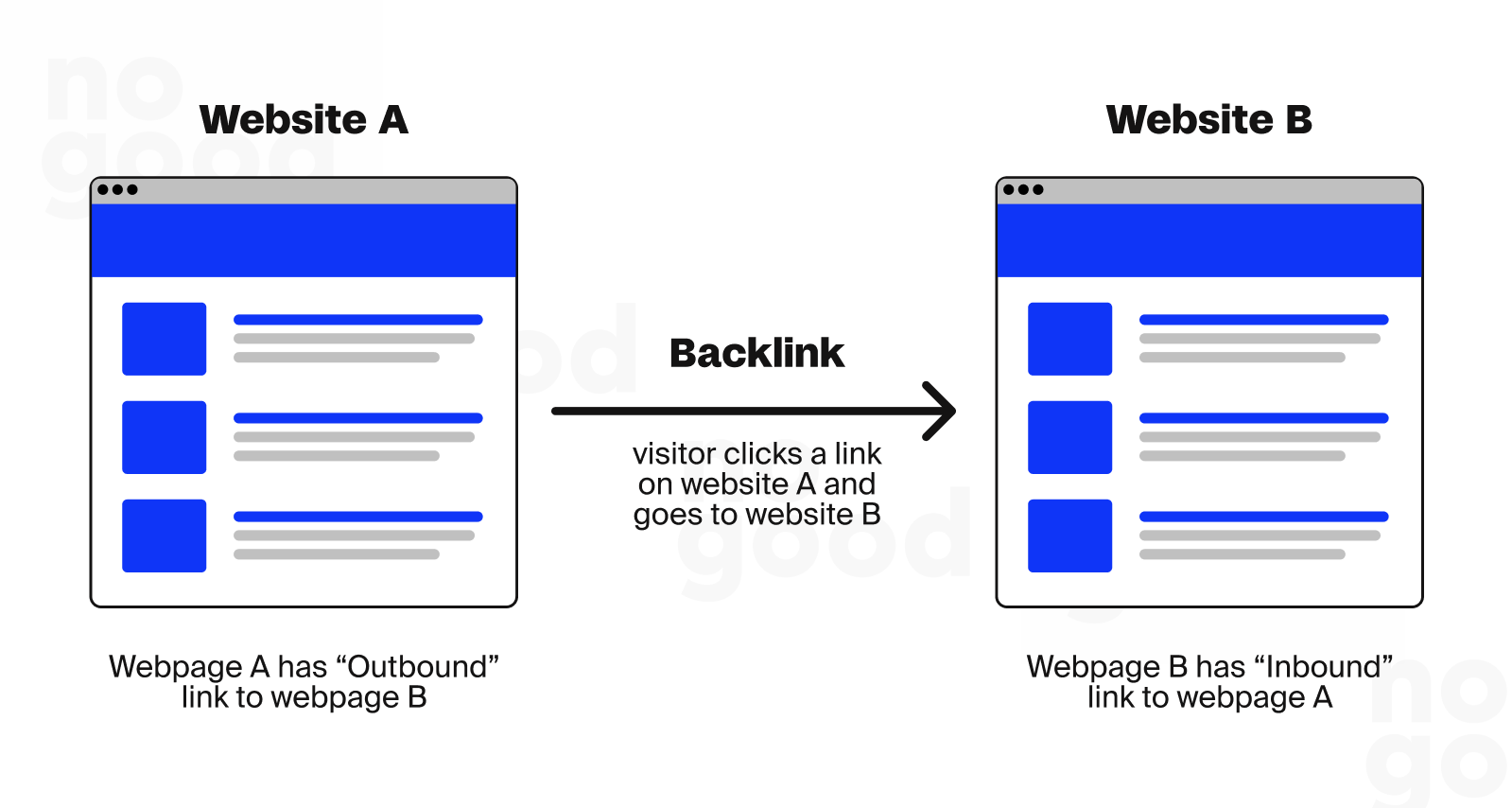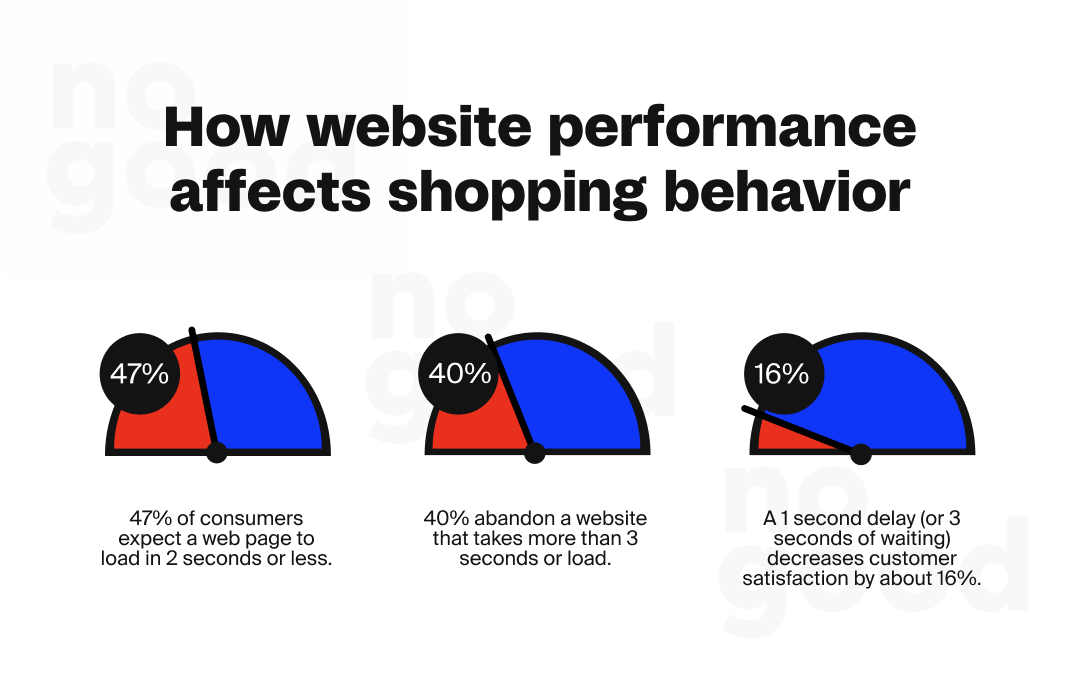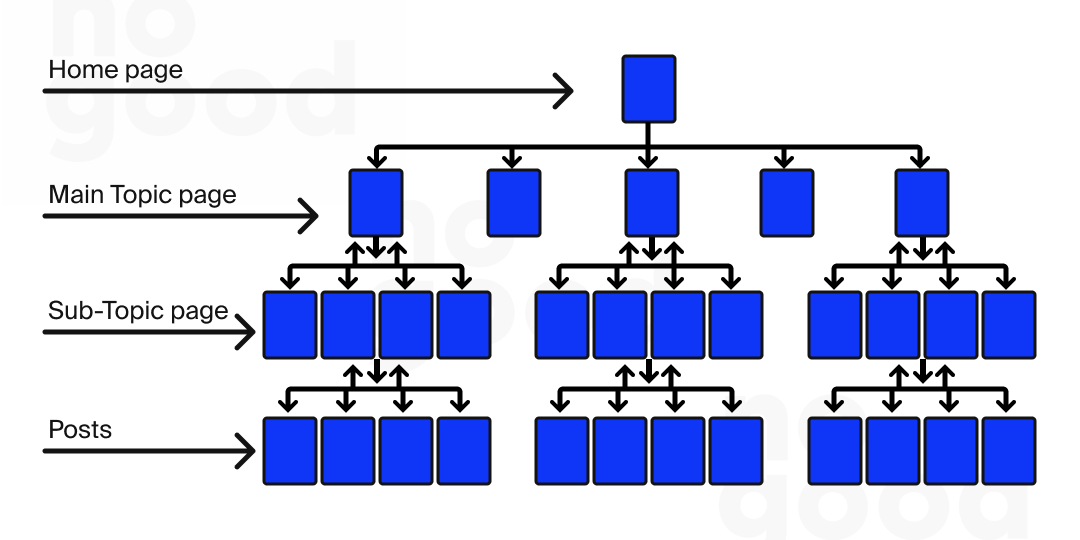Domain authority is more than just a score; it’s a signal to search engines that communicates the value your website, content, and information brings to its users. While domain authority is not a ranking factor, the tactics you use to improve this vanity metric will improve your SEO and ranking signals at the same time.
Domain authority is a metric people can use to determine holistic improvements to your SEO strategy and give you clues on how to adjust your tactics.
Want to increase your organic visibility and reach?
What Is a Domain Authority Score?
Domain Authority or Website Authority represents the overall authority of a website or domain. This score takes into account things like the quality of your website and content, backlink profile, the volume of organic traffic, and more.


This metric was originally developed by Moz and uses a scale from 0 to 100 to determine the level of credibility your website has. Many SEO tools and dashboards have their own version of domain authority scores, but they all aim to communicate the same thing. Domain score goes by many names, but it gives a view of what you’re building and how fast you’re building it.
How is Domain Authority Calculated?
Many things can affect the domain authority score of your site. User experience is likely the most important one to focus on. User experience can mean a lot of things but includes a fast-loading site, easy-to-find information, quality of content, and, of course, backlinks.

Beyond backlinks, social media signals, brand mentions, and relevancy play a role in visibility expansion. While SEO is a big part of the authority game, these metrics shouldn’t be ignored either.
These are not only looking at the number or frequency of internal and external links but also taking into account the quality. This pushes all marketers to be careful about link exchanges or gaining a large number of backlinks from a spammy site.
What Is a Good Domain Authority Score?
Defining what a good score is can be difficult as each site and domain is its own living and breathing thing with its own set of challenges based on industry. Sites with less time live on the web are obviously going to have lower scores because they’ve had fewer opportunities to gain these authoritative signals. Older sites that have been intentional about their strategies and building good, clean authority will have increased scores.

In general, domain scores can be broken down into the following categories:
- 0-30: Below Average
- 40-50: Average
- 50-60: Good
- 60+: Excellent
The rate of improvement is tied to many different ranking factors and SEO initiatives. Understanding where to put your efforts is half the battle; whether you’re just starting or looking to enter into the next tier of authority, the following tactics will help y
How to Increase Domain Authority (6 Ways)
1. Acquire High-Quality Backlinks from Authority Sites
Backlinks from authoritative sites are among the most crucial to improving your domain authority. Having an authoritative domain link to a key page is basically an endorsement from that website that your content is valuable. The higher the number of linking root domains pointing to your site, the better search engines can understand your relevancy.

Relevancy is key because the better a search engine can understand not just your content, but the purpose of your content, it will do a better job of ranking your results appropriately. Not only that, it’s a way to build up referral traffic. This won’t change overnight but it’s never a bad thing to have a link to your website from a high-trafficked, authoritative site.
Priority Backlinking Tactics
1. Create High-Quality Content
The most organic, no pun intended, way of doing this is to create high-quality content that is backlink-worthy. This is the same advice Google will give to any marketer because it’s the best way to generate authority without looking spammy. This isn’t limited to blog content, high-quality infographics are another good way to build up a backlink profile.
2. Building Relationships / Guest Posting
You can also build relationships with websites or publishers that you can partner with for guest posting. This is a great way to generate quality links back to your own site while improving your reach on another platform. Before collaborating, it’s wise to analyze the authority of potential partner sites using a DA PA checker. Guest posting on high-authority relevant sites is a great way to improve your E-E-A-T (Experience, Expertise, Authoritativeness, and Trustworthiness) quality rating.
3. Identify Broken Backlinks
Identifying broken backlinks for an authoritative site could be a way to make an easy suggestion to update a broken outgoing link to a fresh piece of content such as yours. This should assist in the relationship-building process by providing value instead of just asking for a link to your site.
2. Optimize Legacy Blog Content for Increased Traffic
While publishing new content on a weekly basis is important, bringing all of your content up to today’s standards and best practices is likely your path to the lowest-hanging fruit and fastest path to ROI. This isn’t to say that net new content can’t do the same; content already live and on the first page should react quicker than freshly published.
Elevating all of your content so that it’s in-line with user intent, and experience, and well optimized for SEO should improve the overall structure and performance of your site. Increasing organic traffic through optimizations and net new content will have a reciprocal effect on your domain authority. As you gain more traffic and align more with your users, their site engagement will improve along with retainment and authority.
Priority Blog Content Optimization Tactics
1. Keyword Research
Go back to your initial keyword research for the blog post you intend to optimize. Ensure that the targeting still makes sense and is aligned with your ideal customer. Look at the search engine results page (SERP) and identify the aspects of your competitors that are working for them and what you need to incorporate to compete and offer something more.
2. Quality Content
Sometimes, blog content format can get stale. Take some time to think about what your customer is thinking about, and make sure your content is of high quality and specific to your user.
3. Optimized Headlines
Title tags and <h1> tags are still one of the best ways to test your content alignment. Making a small edit to your title tag and headline could yield increased performance, though it may seem like a small change.
4. Internal Linking
I’ve said before, and I’ll say it again: internal linking is your best friend. Overlinking is the enemy. Be intentional with not only the links you choose to use but also the anchor text you’re using to influence a click-through. Having well-aligned content that speaks directly to your anchor text is an optimal user experience.
3. Improve Page Speed
Page speed dramatically impacts user experience. If a site takes too long to perform an action, the user will get frustrated and leave the site and explore another option. With performance as a ranking factor now, marketers should be focused on improving the path to conversion. Page speed should be the first tactic to implement as it represents a key conversion factor.

Page speed can be a difficult thing to resolve, especially if you have a complex site structure. While it may be difficult, it’s something Google and other search engines will continue to push for as their goal remains the same: providing the best answer as fast as possible.
4. Audit Your Site and Remove Technical Barriers
Having a clean site is another key user experience level to pull. If a user runs into dead pages or encounters redirect-loops and has a hard time navigating the site, they’re going to lose trust in the brand.
Technical SEO Barriers should be monitored on a weekly basis, as new issues will arise as you dig deeper into your site.
Priority Technical Barriers to Resolve
1. Optimize Images
Reducing image dimensions and file size through compression can significantly speed up your website. Since images are often larger files compared to HTML and CSS files, optimizing them can reduce loading times in the short term.
2. Reduce HTTP Requests
When you’re dealing with a lot of script dependencies and assets, you’re likely to have a lot of HTTP requests. Reducing or prioritizing these assets is a must as this is usually the first hurdle a search engine has to get over to parse the page. Everything else will have to wait until resources are downloaded.
3. Use Browser Caching
Some marketers may want to manipulate the caching of certain files or file types. Static assets on the site that rarely change can have a longer cache life; this will eliminate the need for the browser to download these assets every time the user visits the site. These static elements can be stored in the browser.
4. Eliminate Unnecessary Render-Blocking JavaScript
Render blocking resources can sometimes be the hardest thing to optimize for. Unnecessary code or bloated scripts that take time to load will block the critical page content. If you have a larger website with a lot of cooks in the kitchen, you likely have code bloat and untangling that web can be difficult and sensitive.
5. Limit Redirects
Redirects can lengthen load times by a fraction of a second or even a few seconds, even though they are occasionally required. Performance problems might arise from the overuse of redirects, particularly on bigger websites with several authors. Reducing needless redirection requires clear redirect criteria and regular evaluations. Wherever feasible, marketers should make sure to concentrate on minimizing redirection.
6. Minify CSS and JavaScript Files
Minification involves removing non-essential elements from code, such as comments, whitespace, and unnecessary semicolons. This results in smaller CSS and JavaScript files that load faster, consume less bandwidth, and enhance performance.
7. Use Effective Third-Party Services
Ensure that third-party services critical to your website’s functions are effective. Focus on hosting, DNS, Caching, and Security.
5. Optimize Your Website Structure and Internal Links
Internal links are your best friend. Overlinking is the enemy. Providing clear, intentional links to supplemental content not only provides a clear path for the user, it provides more doors to open for search engines as they explore the content on your site. Internal links are a powerful way to communicate which pages should hold authority on your site but it’s not the only thing you should have in your arsenal.

Using global site elements like main navigation, footer, and side panels are another great way to increase the number of internal linking pages to key areas of your site. Many marketers today are using these elements to drive authority to pages that have the best conversion rate.
Priority Site Structure Tactics
1. Clear & Logical Hierarchy
You know your business well, but that doesn’t mean everyone who visits your site will understand it the way you do. Take a step back and look at how you’re communicating your company by your main navigation and by the paths from your homepage. Use specific terms that are clear about what the user is going to see by moving on to the next page or step down the funnel.
2. Internal Linking
Internal linking, again? Yes, this is a consistent theme for good reason. Internal linking is a powerful tool in your toolbelt. Internal linking will improve the visibility of a page that is over three clicks deep, find opportunities to link and lift this up to increase user and search engine engagement.
3. Optimized URLs
URLs are not only used by marketers and SEOs; they are increasingly used by searchers to get more context about a page before visiting. Having SEO-friendly URLs are a critical element in having a clear and effective site architecture.
4. Sitemap
Regularly updating your sitemap is the fastest way to let a search engine know about a newly published or edited page. Most website management systems build these automatically. If you’re operating with a site that doesn’t have native sitemap abilities, understand what options you have to build one; you need it. Ensure that your sitemap is submitted and fetched correctly in Google Search Console.
5. Eliminate Duplicate Content
Every page on your site has a job. Their job is to get someone from one place to the other and move users down the funnel. Having duplicate messaging can cause confusion or lead to a lack of brand trust.
Duplicate content can be trouble from a user perspective but also a search engine perspective. Remove all duplicate content from the site to keep each page focused and effective.
6. Track and Engage with Brand Mentions
Monitoring and interacting with brand mentions is an essential part of achieving a higher domain authority. By keeping an eye on the places in which your company is discussed online, you may spot chances to interact with your audience and form connections.
Utilize resources like SEMrush, Mention, or Google Alerts to monitor mentions of your company name, goods, or important employees. Spend some time interacting with brand references after you’ve found them. React to remarks, express gratitude to users for compliments, and resolve any issues or critiques.
By being proactive, you can better control your online reputation and show that you are devoted to communicating with your audience, both of which may enhance the authority and exposure of your business.
Building Your Authority With a Team
Increasing domain authority is a complex process that calls for a mix of techniques meant to boost the relevance, exposure, and trustworthiness of your website. You can gradually increase your domain authority by implementing these specific strategies.
Building your website’s domain authority takes time and effort; it is not a quick fix. To keep raising your domain authority and increasing the amount of organic traffic coming to your website, be consistent, track your results, and make any adjustments to your tactics.








Great article! These six tactics are spot on—especially the focus on high-quality backlinks and consistent content creation. I’ve noticed a real difference in domain authority when applying these strategies for my own website. It’s always good to get a clear, actionable guide like this. Thanks for sharing!